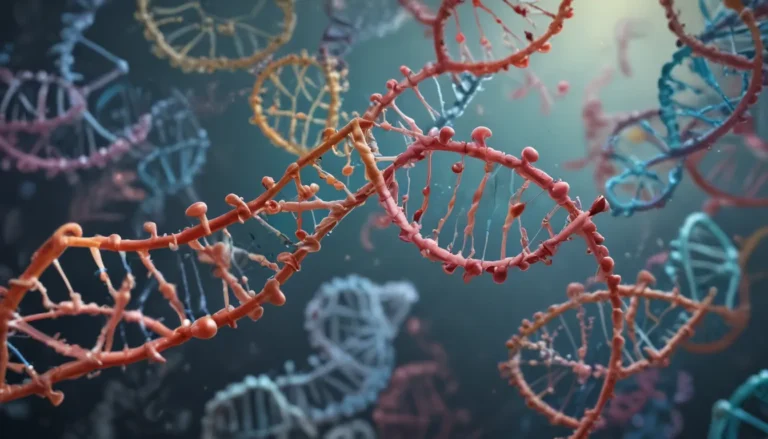A Note About Images: The images used in our articles are for illustration purposes only and may not exactly match the content. They are meant to engage readers, but the text should be relied upon for accurate information.
Photosynthesis stands as the lifeblood of our planet, transforming sunlight into vital energy that sustains all living creatures. While most plants rely on the traditional C3 photosynthesis, there exists a select group of botanical marvels that have embraced a more sophisticated photosynthetic pathway known as C4 photosynthesis. This adaptation equips these plants with a supercharged ability to flourish in harsh environments characterized by scorching temperatures, intense sunlight, and scarce carbon dioxide levels.
Prepare to be amazed as we embark on a journey to uncover 20 unbelievable facts about C4 photosynthesis that will illuminate the complexity and brilliance of nature. From the captivating biochemistry driving this process to the diverse array of plants harnessing its power, these insights will unveil the captivating realm of C4 photosynthesis and its pivotal role in our ecosystem.
Unveiling the Marvels of C4 Photosynthesis
C4 photosynthesis stands as a pinnacle of botanical evolution, showcasing an advanced biochemical process utilized by specific plants to efficiently capture and convert carbon dioxide into essential organic compounds. This innovative adaptation serves as a lifeline for these plants in challenging environments where traditional photosynthesis would falter.
A Glimpse into History: The Discovery of C4 Photosynthesis
In the annals of botanical history, a groundbreaking revelation unfolded in the 1960s when astute researchers uncovered the enigmatic C4 photosynthetic pathway in maize plants. This discovery was catalyzed by the anomalous disparity in carbon isotope levels present in the tissues of these plants, heralding a new chapter in the study of photosynthesis.
Exploring the Anatomy of C4 Plants
Diverging from the conventional leaf structure observed in C3 plants, C4 plants boast specialized leaf anatomy known as Kranz anatomy. These distinctive cellular arrangements play a pivotal role in facilitating the efficient execution of the C4 photosynthesis pathway, underscoring the ingenuity of nature’s design.
Fostering Efficiency: The Role of C4 Photosynthesis in Minimizing Photorespiration
A standout feature of C4 photosynthesis lies in its remarkable ability to curtail photorespiration, a competing process that can impede carbon fixation. By mitigating this energy-draining phenomenon, C4 plants conserve precious water and energy resources, enhancing their resilience in harsh climates.
C4 Plants: Nature’s Agricultural Powerhouses
Numerous vital crop species, including maize, sugarcane, and sorghum, harness the prowess of C4 photosynthesis to bolster their productivity and endurance in diverse agricultural settings worldwide. This adaptation serves as a cornerstone for their success in yielding bountiful harvests amidst challenging environmental conditions.
Unraveling the Biochemical Machinery of C4 Photosynthesis
At the heart of C4 photosynthesis lies a sophisticated biochemical engine orchestrated by a series of intricate reactions that concentrate carbon dioxide around the pivotal enzyme responsible for fixation. This orchestrated dance of molecules leads to a surge in photosynthetic efficiency, underscoring the ingenious complexity of this process.
The Elegance of Water-Use Efficiency in C4 Plants
Owing to the specialized nature of C4 photosynthesis, these plants exhibit superior water-use efficiency compared to their C3 counterparts. This adaptive advantage empowers them to thrive in arid landscapes and water-stressed environments, showcasing the resilience inherent in their biological blueprint.
A Tapestry of Evolution: The Independent Emergence of C4 Photosynthesis
Across diverse plant lineages, the evolution of C4 photosynthesis has unfurled independently, a testament to its efficacy as a strategic adaptation tailored to various environmental exigencies. This rich tapestry of evolution underscores the versatility and adaptability of C4 plants in navigating disparate ecological landscapes.
Illuminating the Efficiency of C4 Photosynthesis in Intense Light
In contrast to C3 photosynthesis, C4 photosynthesis reigns supreme in high-light intensity settings, flourishing in regions bathed in abundant sunlight such as tropical and subtropical zones. This affinity for vibrant light underscores the specialized adaptation of C4 plants to their luminous habitats.
The Gas Exchange Gambit: C4 Photosynthesis and Elevated Carbon Dioxide Concentration
Central to the allure of C4 photosynthesis is its capacity to engender a heightened concentration of carbon dioxide proximal to the enzyme governing its fixation. This nuanced ballet of molecular gradients amplifies the overall efficiency of photosynthesis, showcasing the strategic advantage conferred by this process.
Harnessing Efficiency: C4 Plants and the Suppression of Photorespiration
A hallmark of C4 photosynthesis resides in the adept suppression of photorespiration, a metabolic quagmire that ensnares energy and undermines productivity. By circumventing this biochemical hurdle, C4 plants optimize their energy utilization and fortify their survival prospects in harsh environmental realms.
The Battle for Survival: C4 Plants’ Competitive Edge in Hostile Climates
Empowered by their higher photosynthetic efficiency and adept water conservation strategies, C4 plants stake a claim of evolutionary superiority over C3 plants in scorching and arid environments. This competitive edge underscores the ingenuity of their metabolic adaptations in confronting adverse conditions.
Metabolic Prowess: The Foundation of C4 Photosynthesis
The evolutionary trajectory of C4 photosynthesis is underpinned by metabolic specialization within the cellular fabric of these plants. This tailored metabolic framework enhances carbon fixation, effacing energy losses and amplifying their triumph in specialized habitats sculpted by nature’s hand.
A Symphony of Nutrient Utilization: C4 Plants and Enhanced Nitrogen and Phosphorus Efficiency
C4 plants showcase a virtuoso performance in their utilization of nitrogen and phosphorus resources, accentuating their prowess in thriving amidst nutrient-deficient environs. This optimized nutrient utilization confers a decisive advantage to C4 plants in their botanical quest for survival and prosperity.
Cultivating Abundance: C4 Photosynthesis and Augmented Crop Productivity
The utilization of C4 photosynthesis by select crop species heralds an era of heightened agricultural productivity, bolstering food security in regions grappling with water scarcity and climatic vagaries. This agricultural boon underscores the transformative potential of harnessing C4 photosynthesis in bolstering global food production.
The Thermodynamic Tapestry: Temperature’s Influence on C4 Photosynthesis
Temperature emerges as a pivotal orchestrator in regulating the efficiency and efficacy of C4 photosynthesis, shaping the rate of carbon dioxide fixation and sculpting the photosynthetic performance of these resilient plants. This temperature sensitivity underscores the dynamic interplay between environmental cues and metabolic responses in the realm of C4 photosynthesis.
Carbon’s Captivating Dance: C4 Photosynthesis and Carbon Sequestration
Bolstered by its heightened efficiency in carbon fixation, C4 photosynthesis emerges as a potent ally in the crusade for carbon sequestration, offering a promising avenue for mitigating the impacts of climate change. This ecological partnership underscores the pivotal role of C4 plants in balancing the carbon ledger of our planet.
Nurturing Ecosystems: C4 Photosynthesis and Ecological Diversity
The profound impact of C4 photosynthesis reverberates across diverse ecosystems, lending crucial support to the evolution of grasslands and savannas teeming with life. These resilient C4 plants stand as pillars of ecological diversity, enriching habitats and nurturing a panoply of organisms with their bounty.
Unveiling Nature’s Secrets: C4 Plants as Beacon of Research
Researchers gravitate towards C4 plants as beacon of inquiry in the realms of photosynthesis, plant physiology, and molecular biology, drawn by the unique features of their carbon fixation pathway. These botanical marvels serve as invaluable model systems, unraveling the mysteries of photosynthetic efficiency and metabolic specialization.
The Unfolding Saga: The Enduring Fascination with C4 Photosynthesis
The saga of C4 photosynthesis continues to captivate and inspire scientists, beckoning them to delve deeper into its intricate machinations and untapped potentials. This dynamic realm of research pulsates with vitality and promise, offering glimpses of a greener and more resilient future shaped by the insights gleaned from C4 plants.
Conclusion
In the verdant tapestry of botanical marvels, C4 photosynthesis shines as a beacon of resilience and innovation, showcasing nature’s adaptive genius in overcoming the formidable challenges of harsh environments. This extraordinary process, with its meticulously orchestrated biochemical choreography and metabolic intricacies, holds profound implications for agriculture and food security in a changing world. By deciphering the secrets of C4 photosynthesis, scientists stand at the threshold of ushering in a new era of sustainable agriculture and ecological stewardship, ensuring a bountiful harvest for generations to come.
FAQs
- What is C4 photosynthesis?
-
C4 photosynthesis stands as a specialized form of photosynthesis harnessed by specific plants to efficiently capture and utilize carbon dioxide in hot and arid conditions.
-
Which plants utilize C4 photosynthesis?
-
Notable examples of plants leveraging C4 photosynthesis include maize, sugarcane, sorghum, and an array of grass species thriving in tropical and subtropical climates.
-
How does C4 photosynthesis differ from C3 photosynthesis?
-
C4 photosynthesis distinguishes itself from C3 photosynthesis through spatial separation of carbon fixation and the Calvin cycle in specialized cells, enhancing efficiency by minimizing carbon losses.
-
What advantages does C4 photosynthesis confer?
-
The advantages of C4 photosynthesis encompass heightened productivity, superior water-use efficiency, and adaptability to arid environments, positioning C4 plants as adept converters of sunlight into biomass.
-
How does understanding C4 photosynthesis benefit agriculture?
- Mastery of the mechanisms underpinning C4 photosynthesis empowers scientists to cultivate more drought-tolerant and efficient crop varieties, paving the way for sustainable agriculture and resilient food systems in the face of climate change.
Photosynthesis beckons as a realm of endless wonder and discovery, offering a glimpse into the intricate dance of life-sustaining processes that shape our world. As we unravel the mysteries of C4 photosynthesis, let us heed nature’s call to stewardship and innovation, forging a path towards a harmonious coexistence with the vibrant ecosystems that thrive around us. Together, let us embark on a journey of exploration and enlightenment, guided by the wisdom of C4 plants and the enduring marvels of photosynthesis.






